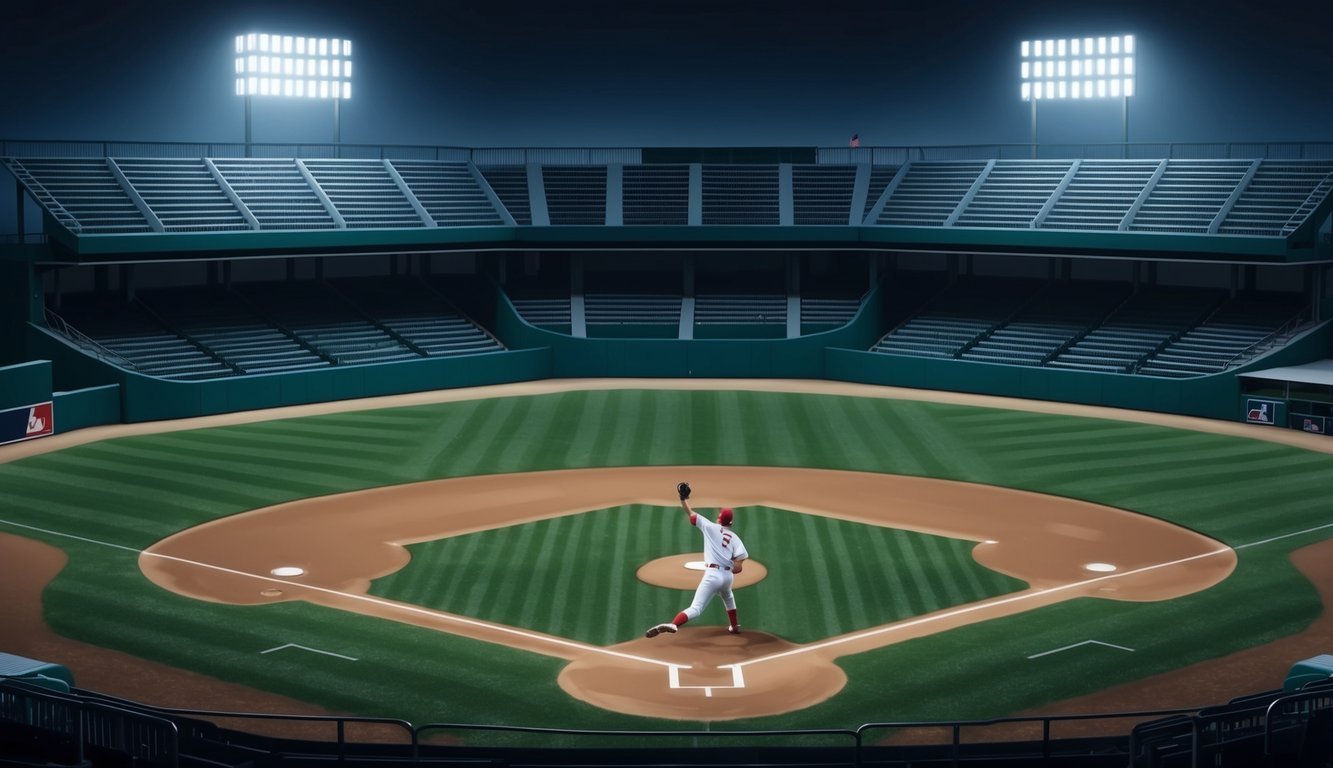Baseball fans often reminisce about the game’s golden eras, but few periods are as intriguing as the Dead Ball Era.
This unique time in baseball history, spanning from around 1900 to 1920, saw a dramatic shift in how the sport was played and experienced.
During the Dead Ball Era, baseball was characterized by low-scoring games, exceptional pitching performances, and a scarcity of home runs. The average team scored just over 3 runs per game, a stark contrast to today’s high-scoring affairs.
Pitchers dominated the game, using tactics like the spitball to keep batters off balance.
The era’s name comes from the baseballs used, which became soft and discolored as the game progressed.
This made it difficult for batters to see and hit the ball effectively.
Players relied on strategy, base-stealing, and small-ball tactics to manufacture runs, creating a style of play that emphasized skill and cunning over raw power.
Origins and Definition of the Dead Ball Era

The Dead Ball Era in baseball spanned from around 1900 to 1920, marking a unique period in America’s pastime.
This phase of the sport was characterized by low-scoring games and a scarcity of home runs, shaping the strategies and playing style of the time.
Characteristics of the Era
During the Dead Ball Era, the game revolved around pitching, speed, and strategic hitting.
Batters focused on making contact rather than swinging for the fences.
Bunting was a common tactic, and players relied on base-stealing and hit-and-run plays to advance runners.
The ball itself played a crucial role.
Unlike today’s baseballs, those used in this era were softer and less lively.
Teams often used the same ball for an entire game, causing it to become increasingly scuffed and misshapen as play progressed.
Pitchers had a significant advantage, employing tricks like spitballs to make the ball move erratically.
This led to lower batting averages and fewer runs scored per game.
Comparison to the Live Ball Era
The Dead Ball Era stands in stark contrast to the Live Ball Era that followed.
After 1920, rule changes and equipment improvements led to a surge in offensive production.
Key differences include:
- Scoring: Dead Ball games averaged 3-4 runs per team, while Live Ball games saw 5-6 runs.
- Home runs: Rare in the Dead Ball Era, they became much more common afterward.
- Batting averages: Typically below .300 in the Dead Ball Era, they rose significantly in the Live Ball period.
The transition between these eras marked a fundamental shift in how baseball was played and enjoyed by fans across America.
Rules and Playing Style
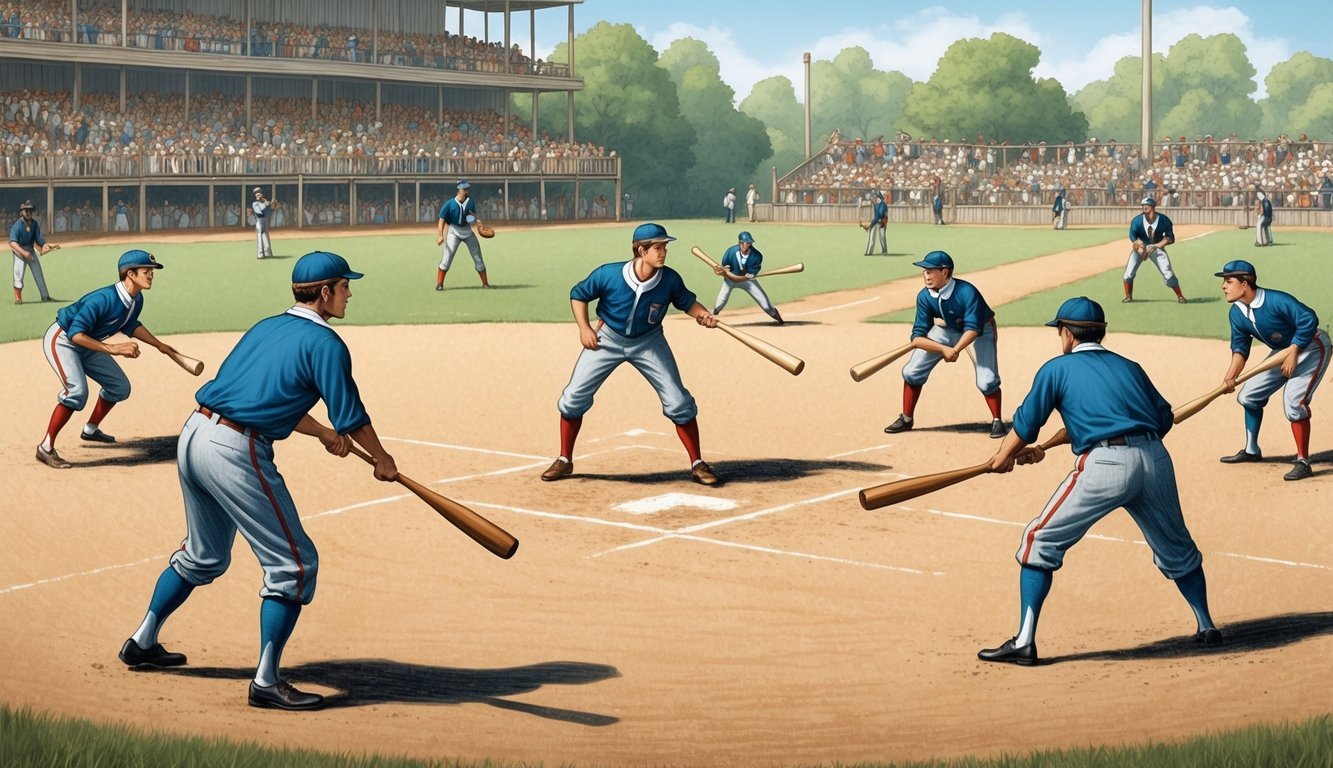
The Dead Ball Era was characterized by unique rules and strategies that shaped the game.
Pitchers dominated, small ball tactics prevailed, and defensive play was paramount.
Pitching Dominance and Strategy
Pitchers reigned supreme during this period.
The spitball was legal, allowing hurlers to doctor the ball with saliva, mud, or other substances.
This created unpredictable movement, making it challenging for batters.
Pitchers also employed the shine ball and mud ball to gain an advantage.
Rule changes gradually restricted these practices.
The foul strike rule, introduced in 1901, counted foul balls as strikes (except with two strikes).
This benefited pitchers, as batters could no longer foul off pitches indefinitely.
Pitchers relied on finesse and strategy rather than raw power.
They focused on inducing weak contact and ground balls, often pitching complete games.
Bunting and the Art of Small Ball
With runs at a premium, teams embraced small ball tactics.
Bunting was a crucial skill, used not just for sacrifices but also as a way to get on base.
Players practiced extensively to perfect their bunting technique.
Managers favored hit-and-run plays and stolen bases to manufacture runs.
Speed on the basepaths was highly valued.
Teams rarely swung for the fences, instead focusing on putting the ball in play and advancing runners.
This style of play required precision and teamwork.
Every at-bat was an opportunity to gain a small advantage, with the goal of scratching out enough runs to win.
Fielding and Defense Focus
Defensive skills were highly prized during the Dead Ball Era.
With fewer home runs and extra-base hits, games often hinged on a team’s ability to prevent runs through stellar fielding.
Gloves were smaller and less padded than modern versions, making fielding more challenging.
Players honed their defensive skills, practicing complex double plays and mastering the art of cutting off throws from the outfield.
Outfielders played shallower positions, as deep drives were less common.
Infielders needed quick reflexes and strong arms to handle the abundance of ground balls and bunts.
Smart positioning and teamwork were essential to shut down opposing offenses.
Significant Players and Teams
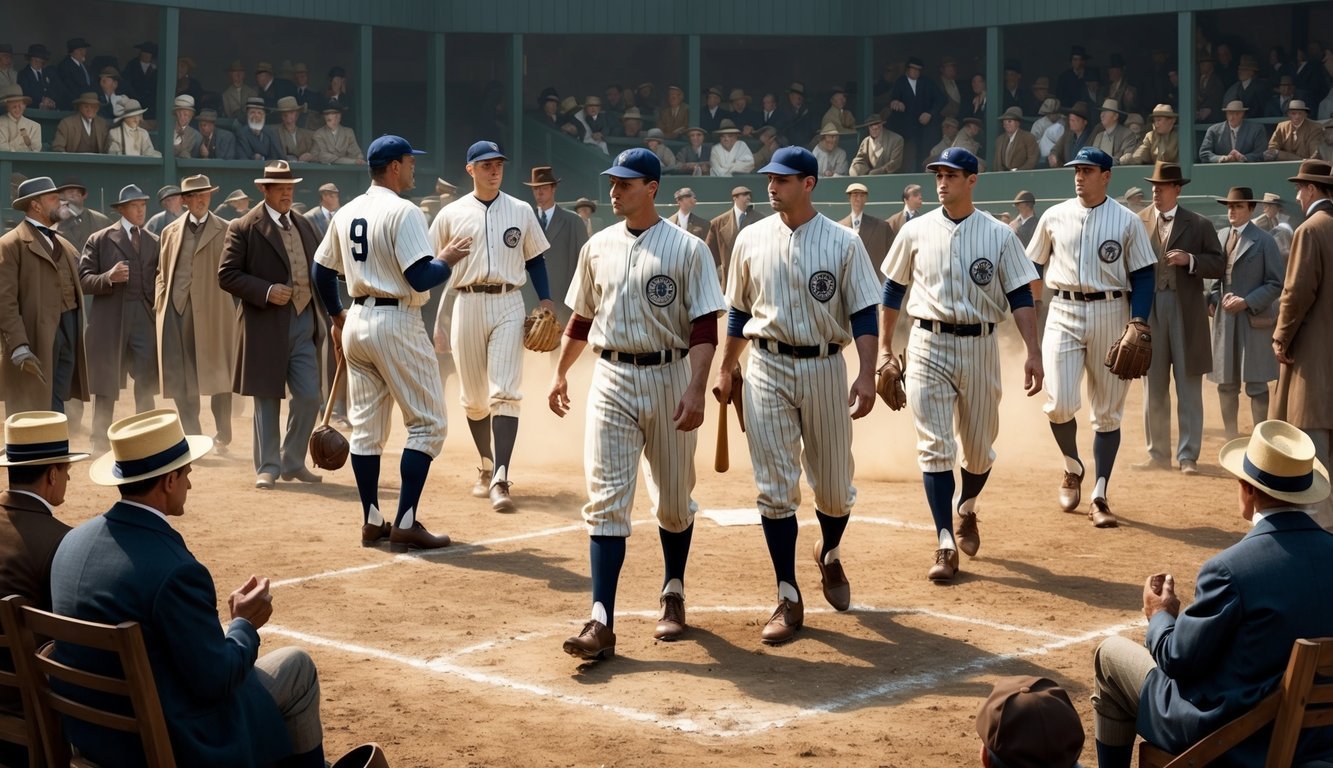
The Dead Ball Era featured legendary players who excelled in hitting, baserunning, and pitching.
Several teams also left their mark during this low-scoring period of baseball history.
Hitting and Baserunning Legends
Ty Cobb dominated the era with his exceptional batting skills and aggressive baserunning.
The “Georgia Peach” won 12 batting titles and still holds the record for highest career batting average at .366.
Honus Wagner, known as “The Flying Dutchman,” was a versatile shortstop who captured eight batting titles.
His speed and defensive prowess made him a complete player.
Tris Speaker, “The Grey Eagle,” excelled in hitting and fielding.
He holds the record for career doubles with 792 and was known for his exceptional center field play.
Eddie Collins, a second baseman, was renowned for his consistent hitting and baserunning.
He stole 744 bases in his career and was a key member of the “$100,000 infield.”
Pitching Greats and Their Tactics
Christy Mathewson, “Big Six,” was known for his pinpoint control and devastating fadeaway pitch (now called a screwball).
He won 373 games and pitched 79 shutouts in his career.
Walter Johnson, “The Big Train,” relied on his blazing fastball to dominate hitters.
He won 417 games and struck out 3,509 batters, a record that stood for over 50 years.
Cy Young set numerous pitching records, including 511 career wins.
His durability and consistency were unmatched, pitching 7,356 innings over 22 seasons.
Ed Walsh mastered the spitball, leading to his nickname “Big Ed.” He holds the record for lowest career ERA at 1.82 and won 40 games in 1908.
Influential Teams of the Era
The Chicago Cubs were a powerhouse, winning four pennants and two World Series between 1906 and 1910.
Their infield of Tinker, Evers, and Chance became famous for their defensive skills.
The New York Giants, led by manager John McGraw, won five pennants from 1911 to 1917.
Their style of play, emphasizing speed and strategy, epitomized Dead Ball Era baseball.
The Boston Red Sox claimed four World Series titles between 1912 and 1918.
Their success was built on strong pitching and timely hitting, featuring players like Tris Speaker and later, Babe Ruth.
Key Events and Turning Points
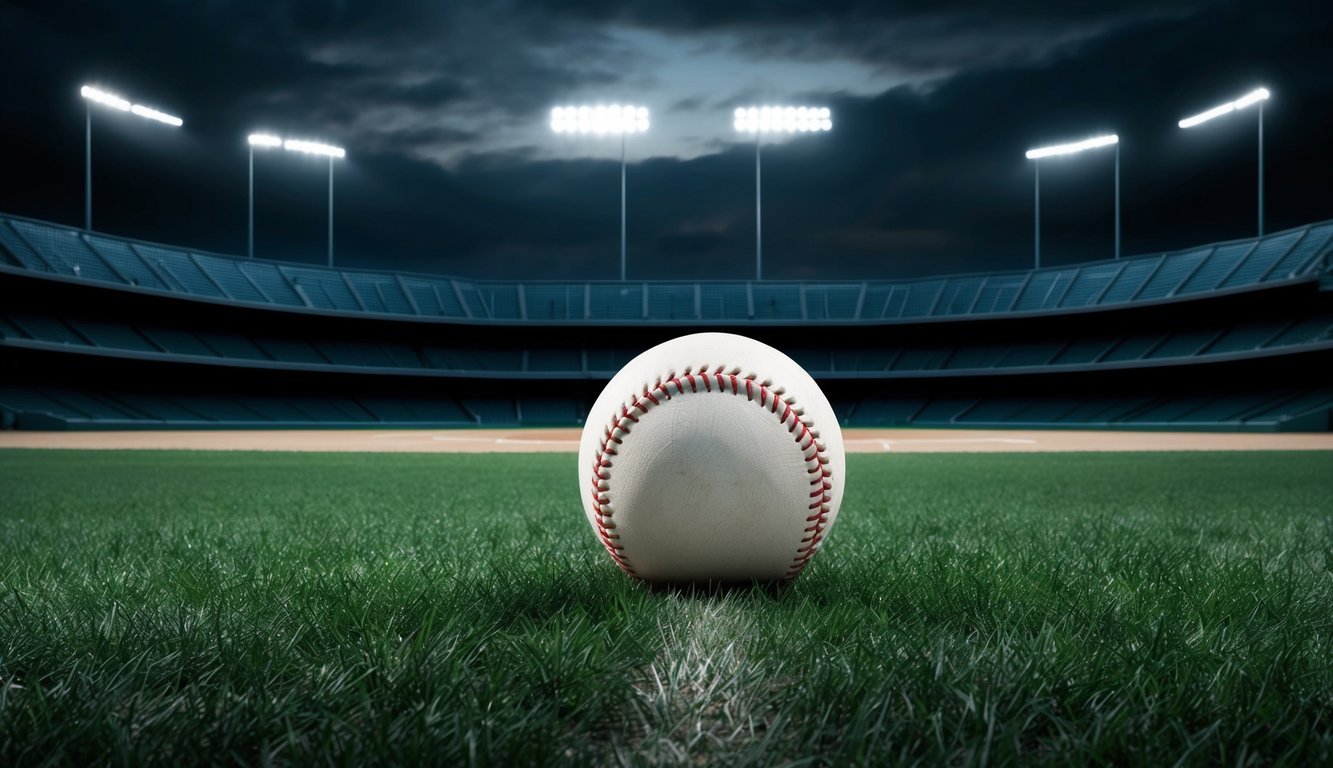
The Dead Ball Era came to an end through a series of dramatic events that reshaped baseball.
These pivotal moments transformed the sport’s rules, equipment, and public perception.
The Black Sox Scandal
In 1919, eight Chicago White Sox players were accused of intentionally losing the World Series in exchange for money from gamblers.
This shocking incident, known as the Black Sox Scandal, rocked Major League Baseball to its core.
The scandal deeply damaged public trust in the sport.
Team owner Charles Comiskey’s reputation suffered, as players cited his stinginess as a motivating factor.
The aftermath led to significant changes:
- Creation of the office of Commissioner of Baseball
- Lifetime bans for the eight accused players
- Stricter rules against gambling in baseball
This event marked a turning point, pushing baseball to clean up its image and restore integrity to the game.
In the wake of this pivotal moment, baseball officials implemented stricter regulations and testing protocols, emphasizing the importance of fair play.
As fans demanded transparency and accountability, discussions around the rules of the game resurfaced, prompting many to ask, “what does e mean in baseball? ” This pursuit of integrity not only revitalized the sport’s reputation but also reinforced the values of honesty and respect among players and fans alike.
Banishment of the Spitball
The spitball, a pitch that involved altering the ball with saliva or other substances, was a staple of the Dead Ball Era.
In 1920, Major League Baseball took action:
- Banned the spitball for new pitchers
- Allowed 17 existing spitball pitchers to continue using it
This decision aimed to increase offensive production and make the game more exciting for fans.
It also addressed concerns about fairness and player safety.
The ban’s effects were immediate.
Batting averages rose, and home runs became more frequent.
This rule change played a crucial role in ending the Dead Ball Era.
The Emergence of the Livelier Ball
In the early 1920s, baseball manufacturers began producing a “livelier” ball.
This new ball had a tighter-wound core and higher-quality materials.
Key changes included:
- More resilient cork center
- Wool yarn wound more tightly
- Higher-grade Australian wool used
These modifications made the ball travel farther when hit.
Batters could now drive the ball with more power, leading to increased home runs and higher scoring games.
The livelier ball, combined with other factors like improved bat quality and the spitball ban, ushered in a new era of offensive dominance in baseball.
This shift marked the definitive end of the Dead Ball Era.
Impact on Baseball and Legacy
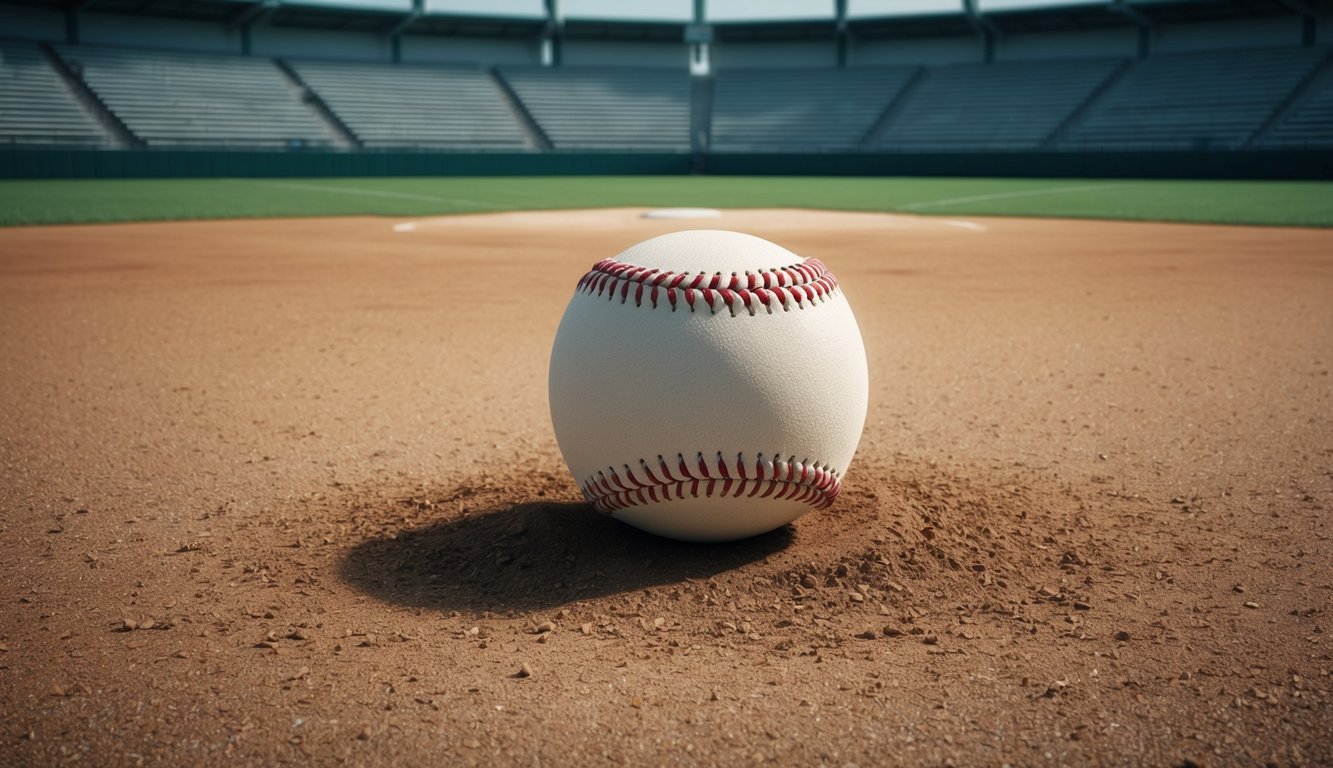
The Dead Ball Era profoundly shaped baseball’s trajectory, influencing strategies, public perception, and the game’s evolution.
Its effects continue to resonate in modern baseball, leaving an indelible mark on America’s pastime.
Changes in Public Perception
Baseball’s popularity soared during the Dead Ball Era.
Fans flocked to ballparks, captivated by the strategic chess match unfolding on the diamond.
The emphasis on pitching duels and small-ball tactics created a different kind of excitement compared to today’s home run-heavy games.
Players like Ty Cobb and Honus Wagner became household names.
Their speed, defensive prowess, and batting skills epitomized the era’s style of play.
Newspapers devoted more coverage to baseball, further boosting its cultural significance.
The era also saw baseball emerge as a unifying force in American society.
It bridged gaps between diverse communities, reflecting the country’s changing demographics during a period of rapid urbanization and industrialization.
Evolution of Baseball Strategy
The Dead Ball Era revolutionized baseball strategy.
Managers focused on “small ball” tactics to manufacture runs:
- Sacrifice bunts
- Hit-and-run plays
- Stolen bases
Pitchers dominated the game.
They used a variety of tricks, including the now-illegal spitball, to keep batters off-balance.
The lack of fresh baseballs during games led to discolored, scuffed balls that were harder for batters to see and hit.
Defensive positioning became crucial.
Infielders played closer to home plate to defend against bunts and ground balls.
Outfielders often played shallow to prevent singles from turning into extra-base hits.
These strategies emphasized teamwork and fundamentals over individual power hitting.
Influence on Modern Baseball
The Dead Ball Era’s legacy persists in modern baseball.
The game has evolved into a more offense-oriented spectacle, but elements from this period remain:
- Strategic pitching: Modern pitchers still use deception and varied pitch types, echoing Dead Ball Era tactics.
- Defensive shifts: Today’s advanced positioning draws inspiration from earlier strategies.
- Base-running importance: While less prevalent, stolen bases and aggressive base-running still play a role.
The era’s emphasis on pitching led to rule changes that shaped the modern game.
The banning of the spitball in 1920 marked a turning point, ushering in the Live Ball Era and changing the balance between offense and defense.
Key figures like Babe Ruth, who began his career during the Dead Ball Era, bridged the gap to the new offensive-minded style of play.
Their success helped drive the game’s popularity to new heights in subsequent decades.
